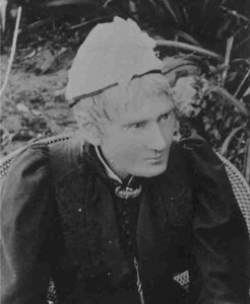Mary Elizabeth Barber

- Born
- 5 January 1818
- Died
- 4 September 1899 (age 81)
Mary Elizabeth Barber studied birds, moths, reptiles and plants. She uncovered many new species of plants and butterflies, and provided leading scientists with specimens and drawings. She also helped to broaden the knowledge of stratigraphic geology of South Africa, which describes the relationships between different layers of rock.
Barber was born in Britain 1818. Two years later her family emigrated to South Africa where she became interested in natural history. She had an extensive knowledge of natural history, particularly entomology and botany, and she began writing to botanists including Sir Joseph Dalton Hooker.
Barber was also an accomplished artist and drew pictures of flora and fauna. She had a keen inquiring mind and the ability to describe clearly what she had observed. Barber was introduced to Charles Darwin by a British entomologist, Roland Trimen, and began to correspond with Darwin. She replied to his Queries on Expression with her observations of emotions in South African communities, and provided him with information that he used in On the Origin of Species.
Barber was a prolific author, writing about plants, insects and South African culture, as well as writing poetry. Her first paper in an overseas journal "On fascination", published in a British journal called Scientific Opinion in 1869, dealt with the hypnotic effect that snakes appear to have on their prey. This was followed by "The aloe, its habits and culture" in the Journal of the Royal Horticultural Society the next year.
Mary had a keen inquiring mind, an artist's eye for detail, and the ability to describe clearly what she had observed.
Darwin encouraged Barber to publish her findings on the fertilisation of a South African Salvia plant, which she published in the journal of the Linnean Society in 1870. She also had a keen interest in the Stapelia genus of plants, and is credited with the discovery of two of the species, Stapelia glabricaulis and Stapelia jucunda.
Barber also painted butterflies and moths, and one of the smallest butterflies, the Dwarf Blue (Oraidium barberae) is named after her. In 1874, Darwin published Barber’s findings on a South African butterfly, Papilio Nireus. In 1979 she produced a paper on “Insectivorous birds in their relation to fruit and vegetable crops”.
She collected and sent back a large number of plants, many of them previously unknown, to the herbarium of Trinity College, Dublin, and the Royal Botanic Gardens in Kew. She collaborated with her older brother Thomas Holden Bowker in building up one of the earliest collections of stone-age implements in South Africa, some of which are now in the British Museum.



